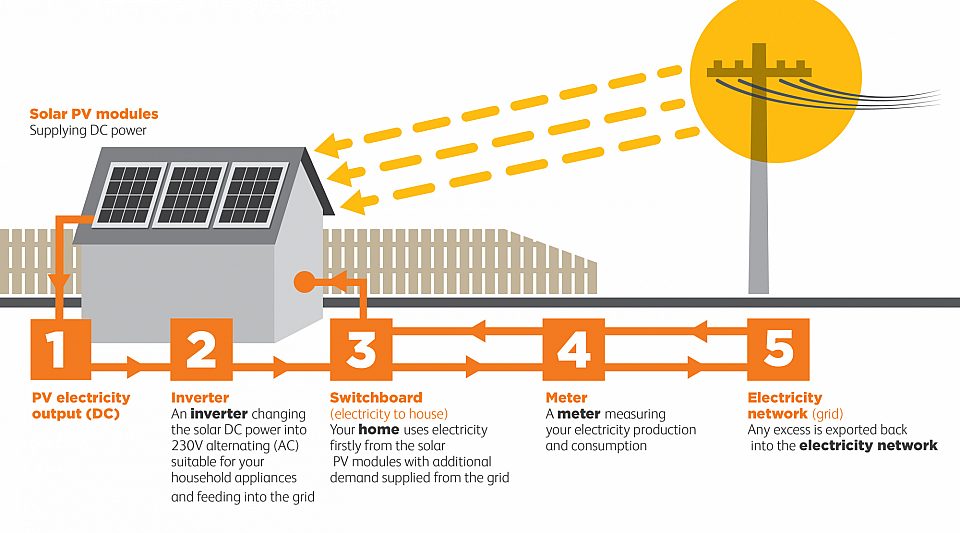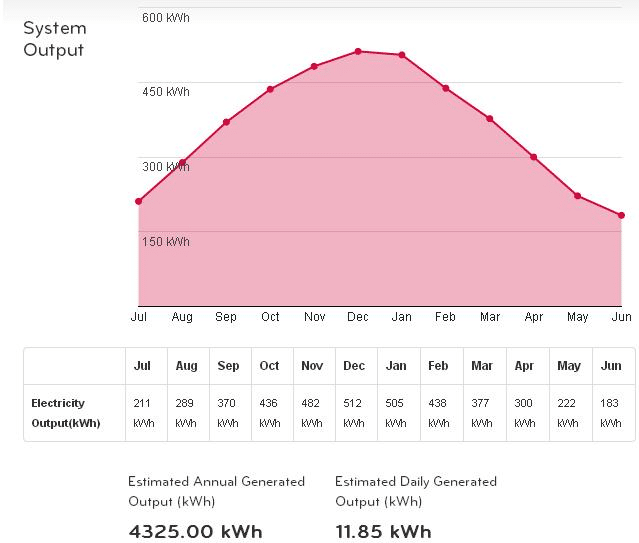Across Australia, solar power is becoming more commonplace, as consumers and businesses looking to make the shift to more sustainable energy solutions. From providing eco-friendly benefits to the environment, through to minimising the costs of quarterly bills, there’s plenty of advantages to having an array installed.
But you need sunlight for your system to reach peak performance, right? How exactly does this all work, and what can you expect from having yours in place on your roof?
How a solar system works
Ultimately, these systems work best when the sun is up in full swing and shining down. When it shifts angles or the strength of its rays fluctuates, so too does the radiation it gives off.
It’s important to note that these solutions don’t generate energy every hour of the day, but it does create it when it’s needed most (e.g. during daylight hours and hot, sunnier periods). Because Australia is one of the sunniest places in the world, we’re lucky enough to have a consistent environment that allows for constant streams of generation.

In turn, this affects how much electricity your array receives and the amount your system generates. Typically, you get the most generation between 11 am and 4 pm.
According to LG Energy, consumption throughout the year on the average 3kW system (based in Wollongong, NSW, for this example) looks a little like this:

However, you can also calculate your output through their website’s nifty calculator, based on your specific location.
And if you’re after plenty of statistics around the booming success of solar panels in Australia across the country, the Clean Energy Council offers plenty of insights into the wonders of this evolving sector.
The cost of your home appliances
Running a household (or even a business) places a high cost on your hip-pocket. Over time, that adds up – a lot. Knowing exactly what these fees are can help you to decrease your usage when it’s not necessary, and control savings.
Jacana Energy has a helpful guide on navigating these running costs on their website. But in a nutshell, you can expect your everyday appliances to cost you around:
| What | Size | Average Use | $ per use | $ per quarter |
| Air conditioner | Medium room Large room | 12 hours/day | $1.22/use $2.30/use | $111/quarter $209/quarter |
| Television | 50” LCD LED) | 4 hours/day | $0.04/use | $3.50 per quarter |
| Dishwasher | 10 place setting – normal program | 7 loads/week | $1.30/use | $17 per quarter |
| Clothes dryer | 7KG capacity | 5 loads/week | $3.80/use | $50 per quarter |
| Heater | Small wall heater Medium split system | 5 hours/day | $0.40/use $0.59/use | $38/quarter $54/quarter |
Source: Jacana Energy
Once you have these costs in mind, it becomes even more apparent how your daily antics around the home (or office) can also come into play.
For example, if you do work from home, you’ll need to factor in charges like electricity, water, gas, heating, cooling, etc. Basically any kind of utility that helps you keep productive and operational while you’re clocked on.
While costs differ per person and based on their kind of work, the above guide can show you how appliances can make a big difference. Switching out to a solar energy system can support you in negating climbing energy costs, especially when working from home becomes more prevalent.
Tip: You can claim your energy and utility costs on tax, if you work from home often enough. At the time of writing this, self-isolation is crucial in combating the COVID-19 pandemic, so rising energy costs can be expected. Know what you can claim back by reading up on tax-deductible items here.
Batter storage brings even more benefits to solar energy
Just when you thought jumping into the renewables game couldn’t get any better, modern technologies and advancements now mean storing your generated energy is even more comfortable. That means less wastage on what your array creates and more support for our in-demand grid.
Recent innovations like the Tesla Powerwall 2 gives energy independence to consumers all across Australia. But it’s important to note that these systems suit some households more than others.
Primarily, a solar battery system works by storing the energy your array creates. The unit itself collects rays from the sun. It turns it into electricity, which is then distributed through to the inverter and converted into a format that can power your property.
Most residential solutions are connected to our grid. When panels produce more electricity than what you actually need, the excess power is fed back into this grid. If your home needs more electricity than what you’re creating, you can draw from this same grid as well.
In a majority of cases, feeding energy back to the network will give you credit on your utility bill, but this does depend on your provider.
RELATED: Solar batteries are really expensive – and other battery myths
Get three free quotes on a solar system now
Now’s the time to take action and lower energy bills before they begin to spike. We recommend getting in touch with our friendly team to get three FREE tailored solar quotes on a solution for your needs.











































